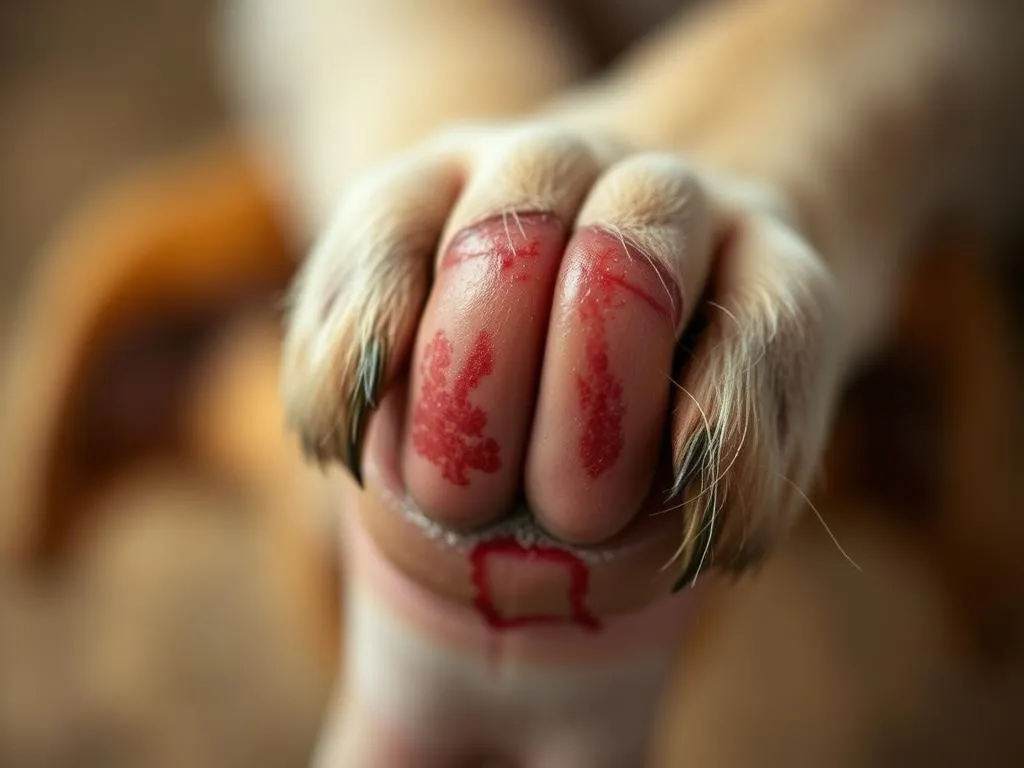
Maintaining your dog’s health is crucial for their happiness and overall well-being, and one often-overlooked aspect is dog toenail injury. Just like humans, dogs rely on their toenails for mobility, grip, and natural behaviors such as digging and running. Understanding how to care for your dog’s toenails can help prevent injuries and ensure they remain healthy.
Understanding Dog Toenail Anatomy
Structure of Dog Toenails
Dog toenails consist of several parts, including the quick, nail bed, and the outer hard shell. The quick is a sensitive area containing blood vessels and nerves, which makes it painful if cut too short during grooming. Unlike human toenails, which are flat and smooth, dog toenails are curved and can vary significantly in size and color depending on the breed.
Purpose of Dog Toenails
The primary functions of dog toenails include aiding in mobility and providing grip while running or playing. They also play a role in natural behaviors, such as digging. Healthy toenails support your dog’s ability to move freely and engage in physical activities, which is essential for their physical fitness and mental stimulation.
Common Types of Toenail Injuries in Dogs
Types of Injuries
Dog toenail injuries can manifest in various ways. Here are some common types:
- Split or Cracked Toenails: These injuries often occur due to environmental factors or improper trimming.
- Torn Toenails: A sudden snag on a rough surface can lead to a torn nail, causing pain and bleeding.
- Overgrown Toenails: When toenails are not trimmed regularly, they can grow too long, leading to discomfort and increased risk of injury.
- Ingrown Toenails: This painful condition occurs when the nail grows into the surrounding skin, causing inflammation and infection.
Symptoms of Toenail Injuries
It’s crucial to recognize the signs of toenail injuries to address them promptly. Symptoms include:
- Signs of Pain and Discomfort: Whining, yelping, or flinching when the paw is touched.
- Behavioral Changes: Limping or reluctance to walk, particularly on hard surfaces.
- Visible Changes in the Nail: Discoloration, irregular shape, or bleeding may indicate an injury.
Causes of Dog Toenail Injuries
Environmental Factors
Many toenail injuries stem from environmental hazards. Rough terrains, sharp objects, or encounters with other animals can lead to injuries. It’s essential to monitor your dog’s play areas to reduce these risks.
Grooming and Maintenance
Improper nail trimming techniques can cause injuries. For instance, cutting into the quick can lead to bleeding and discomfort. Additionally, a lack of regular grooming can result in overgrown nails, which are more prone to splitting and breaking.
Health Conditions
Certain health conditions can affect nail health. For example, dogs with diabetes or autoimmune diseases may experience weak or brittle nails. Nutritional deficiencies, particularly a lack of essential vitamins and minerals, can also compromise nail integrity.
Prevention of Toenail Injuries
Regular Grooming Practices
Establishing a grooming routine is vital for preventing toenail injuries. Here are some tips:
- Recommended Nail Trimming Schedule: Aim to trim your dog’s nails every 4-6 weeks, depending on their activity level and growth rate.
- Tools and Techniques for Safe Trimming: Use specialized dog nail clippers or grinders. Familiarize yourself with the anatomy of the nail to avoid cutting into the quick.
Safe Environment
Creating a safe environment is another essential step in preventing toenail injuries.
- Creating a Safe Play Area: Ensure your dog’s play area is free of sharp objects and rough surfaces.
- Regular Checks for Hazards: Frequently inspect your yard and home for items that could pose a risk to your dog’s paws.
Diet and Nutrition
A balanced diet plays a significant role in maintaining healthy toenails. Ensure your dog receives a nutrient-rich diet that includes:
- Importance of a Balanced Diet for Strong Nails: Foods high in protein, biotin, and omega fatty acids can strengthen nails.
- Supplements that Promote Nail Health: Consider supplements specifically designed for skin and nail health if your dog’s diet lacks essential nutrients.
First Aid for Dog Toenail Injuries
Immediate Care Steps
If your dog sustains a toenail injury, act quickly to provide first aid:
- How to Clean and Protect the Injury: Gently clean the area with warm water and mild soap. Avoid using alcohol or hydrogen peroxide, as these can irritate the injury.
- When to Apply Pressure and Bandage: If bleeding occurs, apply gentle pressure with a clean cloth. Once bleeding stops, bandage the area to protect it from further injury.
Home Remedies
Several natural remedies can help soothe pain and promote healing:
- Natural Remedies to Soothe Pain: Aloe vera gel can be applied topically to reduce inflammation and pain.
- Over-the-Counter Products that Can Be Used: Pet-safe antiseptic ointments can help prevent infection.
When to Seek Veterinary Care
Some toenail injuries require professional attention. Seek veterinary care if you notice:
- Signs That Require Professional Treatment: Severe bleeding, signs of infection (swelling, pus), or if the nail is completely detached.
- Possible Treatments Available at a Vet’s Office: Your vet may recommend procedures like nail removal or antibiotics for infection.
Treatment Options for Toenail Injuries
Veterinary Treatments
If the injury is severe, your veterinarian may employ various treatment options:
- Common Procedures: Nail removal or bandaging may be necessary if the nail is severely damaged.
- Medications to Manage Pain and Infection: Your vet may prescribe pain relief and antibiotics to prevent infection.
Post-Treatment Care
After treatment, follow your veterinarian’s care instructions closely:
- Aftercare Instructions for Optimal Healing: Keep the area clean and dry, and monitor for signs of infection.
- Monitoring for Complications: Watch for any changes in behavior or signs of discomfort, and report them to your vet.
Long-Term Nail Health Maintenance
Regular Check-Ups
Routine veterinary visits are essential for maintaining your dog’s nail health.
- Importance of Regular Vet Visits for Nail Health: Regular check-ups can help identify potential issues before they become serious.
- Role of Professional Grooming: A professional groomer can provide expert nail care and identify any problems you may have missed.
Building a Nail Care Routine
Incorporating daily practices can help maintain healthy toenails:
- Daily Practices to Maintain Healthy Nails: Regularly check your dog’s nails for length and signs of injury.
- Recognizing Early Signs of Potential Issues: Be vigilant about changes in nail color, shape, or your dog’s behavior, as these can indicate underlying issues.
Conclusion
Caring for your dog’s toenails is crucial for their overall health and well-being. By understanding the anatomy of dog toenails, recognizing common injuries, and implementing preventive measures, you can ensure your furry friend stays active and healthy. Regular checks, a balanced diet, and proper grooming can help prevent dog toenail injuries and keep your pet happy and pain-free.









